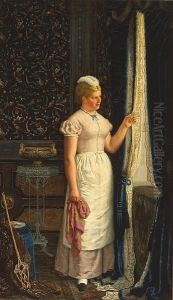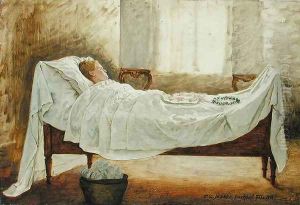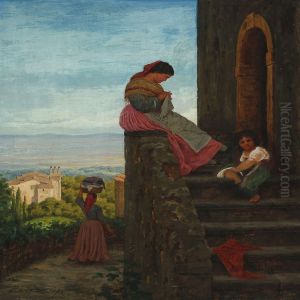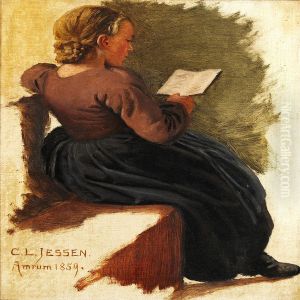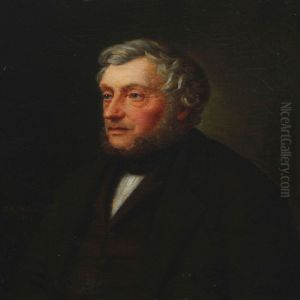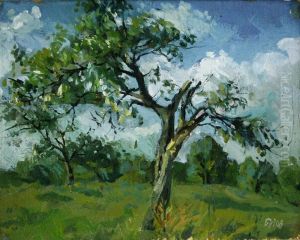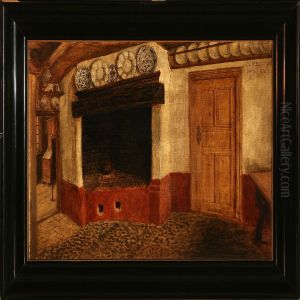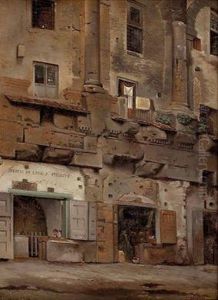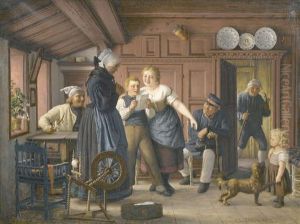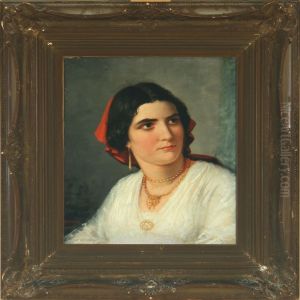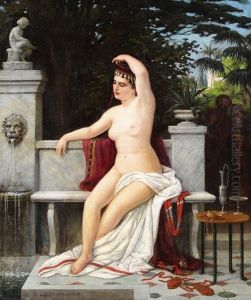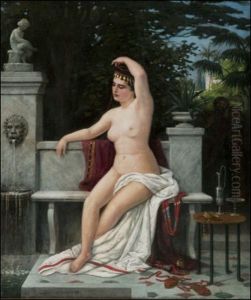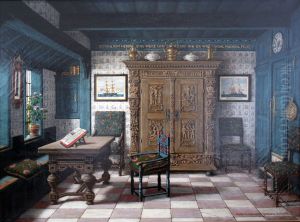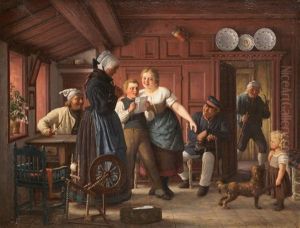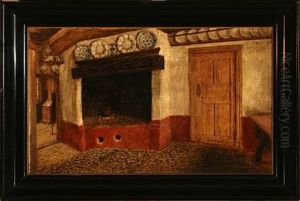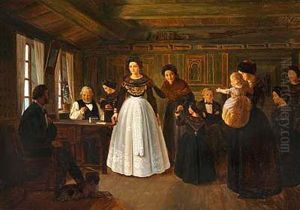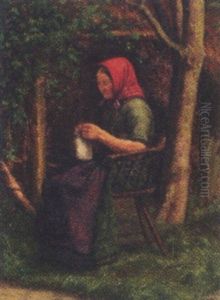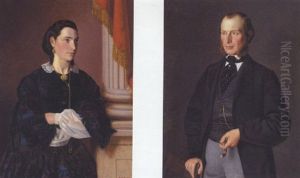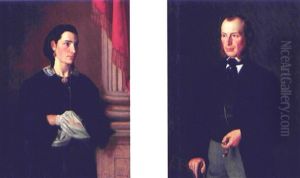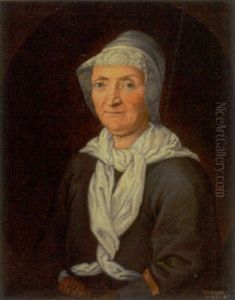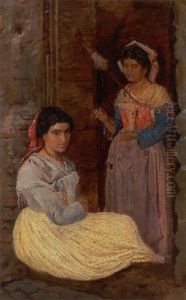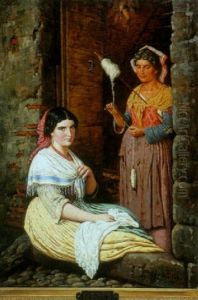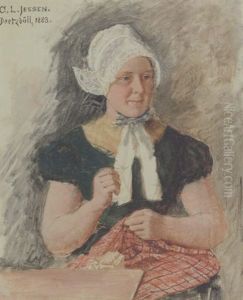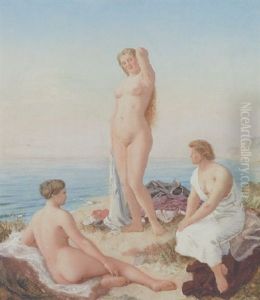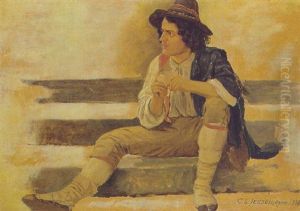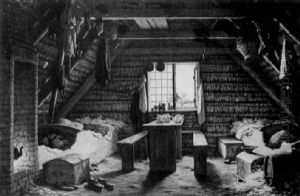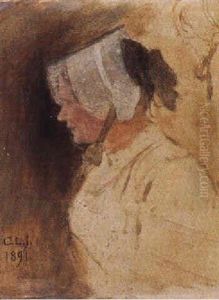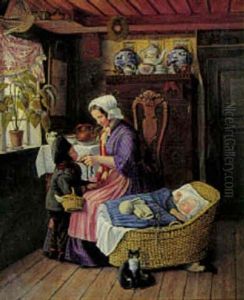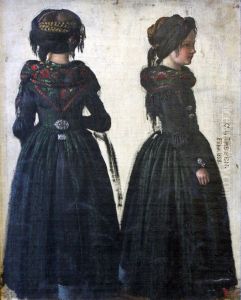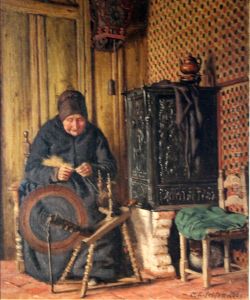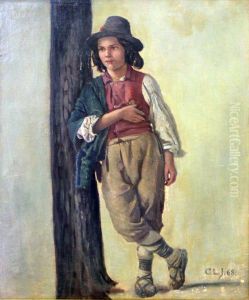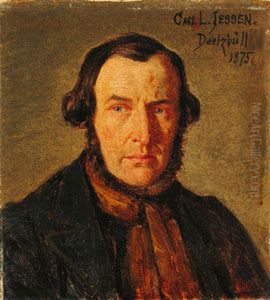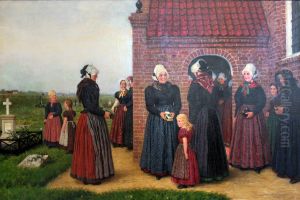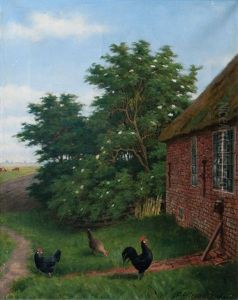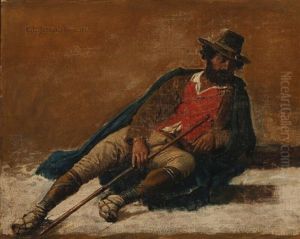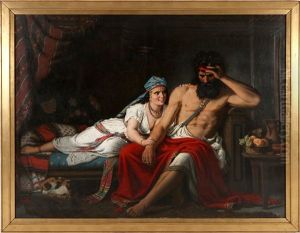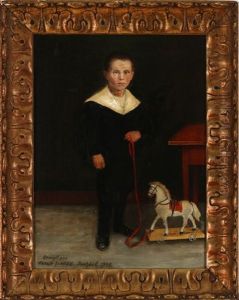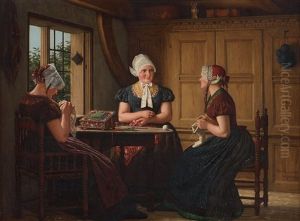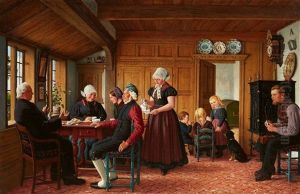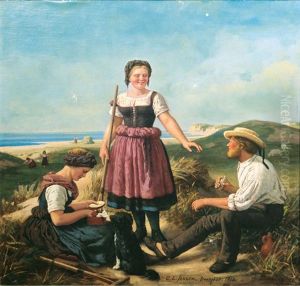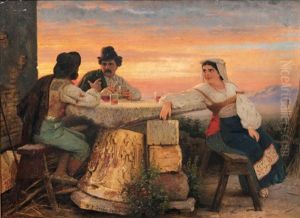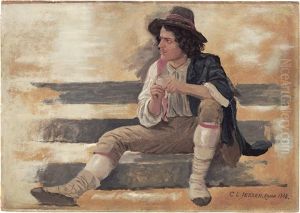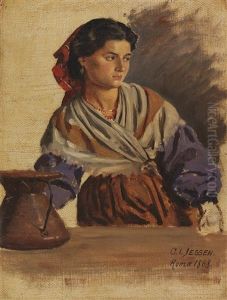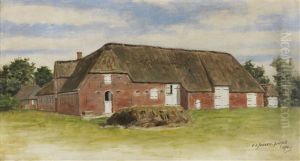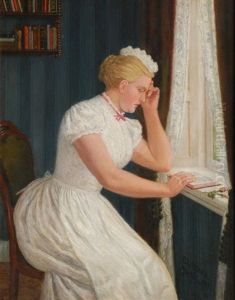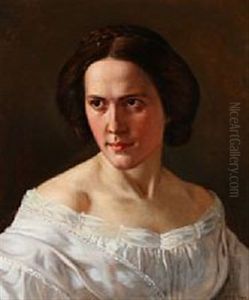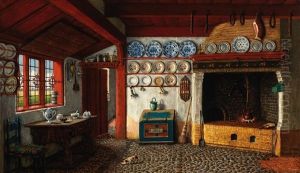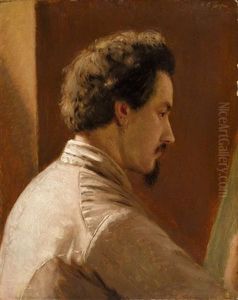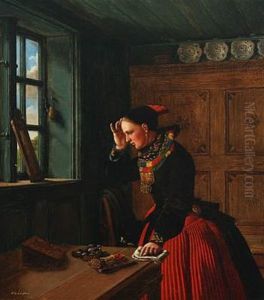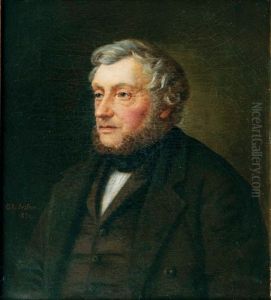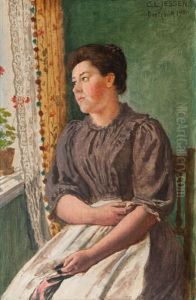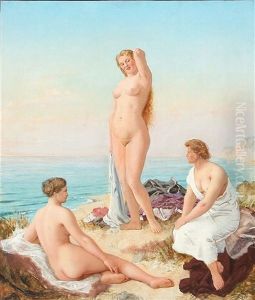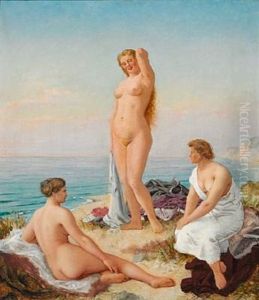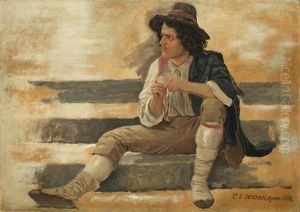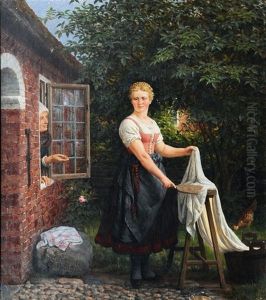Carl Ludwig Jessen Paintings
Carl Ludwig Jessen was a German-Danish realist painter born on September 22, 1833, in Deezbüll, now a part of Nordfriesland in Schleswig-Holstein, Germany. Jessen was known for his detailed and intimate portraits of rural life in Northern Germany and Denmark, capturing the daily life and customs of the local peasantry with a particular focus on the Frisian people.
Jessen received his initial art education at the Copenhagen Academy in Denmark, where he studied from 1855 to 1859. His time at the academy allowed him to hone his skills and adopt a realist approach to painting, which was becoming increasingly popular during the mid-19th century. After completing his studies, he traveled throughout Germany, further developing his style and technique.
Throughout his career, Jessen exhibited a keen interest in the lives of ordinary people, and this is reflected in his works, which often depict scenes of villagers engaged in everyday activities. He paid great attention to detail, not only in the portrayal of his subjects but also in the use of light and shadow, which added depth and realism to his paintings.
In 1866, Jessen became a member of the Schleswig-Holsteinische Kunstgenossenschaft (Schleswig-Holstein Art Association) and participated in their exhibitions. He received considerable recognition in his day and was commissioned to create portraits for notable individuals and local patrons. Despite the regional focus of his work, Jessen's paintings were appreciated for their universal depiction of rural life and the human condition.
Carl Ludwig Jessen continued to paint and exhibit his work until his death on January 28, 1917, in Deezbüll. His legacy is preserved in the form of numerous paintings that provide a valuable insight into the 19th-century rural culture in Northern Europe. His works can be found in various museums and private collections, serving as a testament to the enduring appeal of his artistic vision.
